Latest Posts
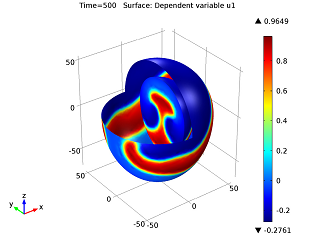
Equation-Based Modeling, a Custom Model of a Beating Heart
Equation-based modeling is one of the great strengths of COMSOL Multiphysics. The ability for you to easily access the equations describing the physics you are working with, and adding or manipulating them as you see fit, dramatically opens up the realm of possibilities that you can achieve through modeling and simulation. This is exemplified by the following custom model of a beating heart.

Unexpected Uses of Magnetic Levitation
Magnetic levitation, or maglev, involves suspending materials with magnetic fields. When gravity, acceleration, and other forces weigh down on an object, they can all be counteracted by magnetic pressure. Some uses that may appear to go completely against nature can actually be explained by fundamental science.
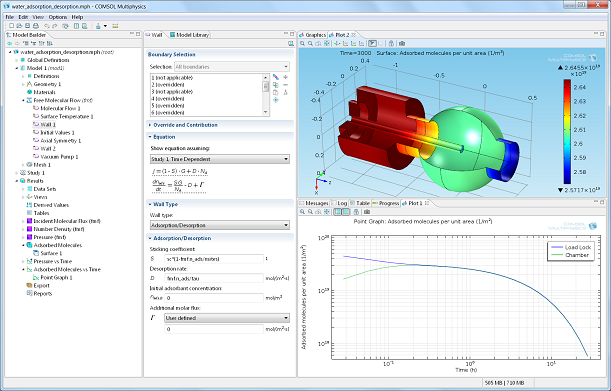
Molecular Flow Module: Simulate Rarefied Gas Flows in Vacuum Systems
Vacuum technology has many important applications, from semiconductor device and MEMS fabrication, to vacuum coatings for corrosion protection, optical films, and metallization. The new Molecular Flow Module provides vacuum engineers with previously unavailable tools for modeling gas flows within vacuum systems.

Multiphysics Simulations inside the Autodesk® Inventor® User Interface
Starting with the release of COMSOL Multiphysics® 4.3b you can work with multiphysics simulations right from the user interface of the Autodesk® Inventor® CAD system. Called the One Window interface, this functionality is available with LiveLink™ for Inventor®. The result of the work by our external interfaces and integrations development team, the One Window interface, is a completely new environment for simulations that are embedded in the Inventor® user interface. It contains the Model Builder, Settings, and all other views […]
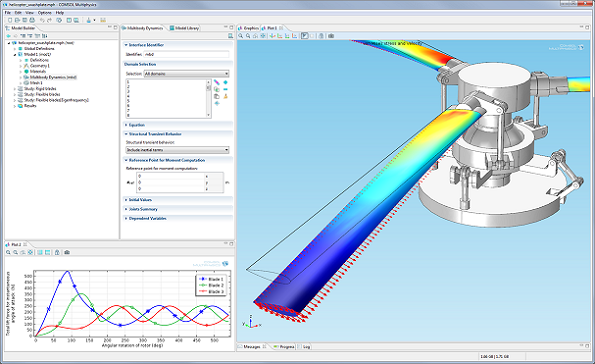
Simulate Mechanical Systems with the Multibody Dynamics Module
The new Multibody Dynamics Module provides engineers with an advanced set of tools to design and optimize mechanical systems to reduce product development costs. This module enables simulation of an assembly of flexible and rigid bodies, along with physical phenomena like structural, heat, electrical, and others. One of the key capabilities included in this module is an easier and faster way of building connections between different bodies using various types of predefined Joints. The objective of multibody analysis is to […]
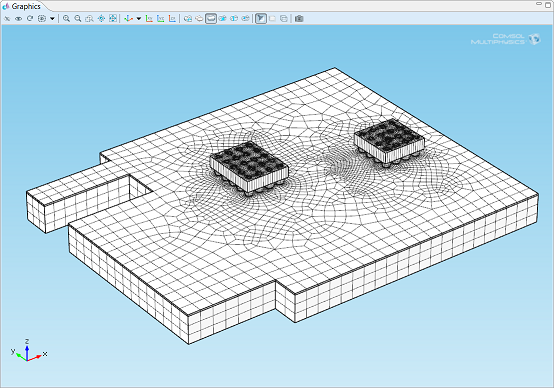
Sweep Your Meshes with Ease
Swept meshing is a geometry discretization technique available in COMSOL Multiphysics for specific types of geometries, including thin geometries, geometries with bends, and models with little or no variation in a specific direction. A swept mesh starts at a source boundary and sweeps along to a specified destination boundary. In previous versions of COMSOL Multiphysics, the source and destination boundaries generally needed to be specified by the user. However, in the latest release, COMSOL Multiphysics version 4.3b, the swept mesh […]

The Graphene Revolution: Part 5
In a paper titled “Choosing a Gate Dielectric for Graphene Based Transistors“, the applications of a semiconducting form of graphene are examined. As we have seen before, single-layer graphene is not a semiconductor, it is a zero bandgap conductor (a semimetal). Efforts are well underway to introduce bandgaps to graphene, which would make it semiconducting with a room temperature mobility an order of magnitude higher than silicon. The race is already underway to find applications for such a material once […]
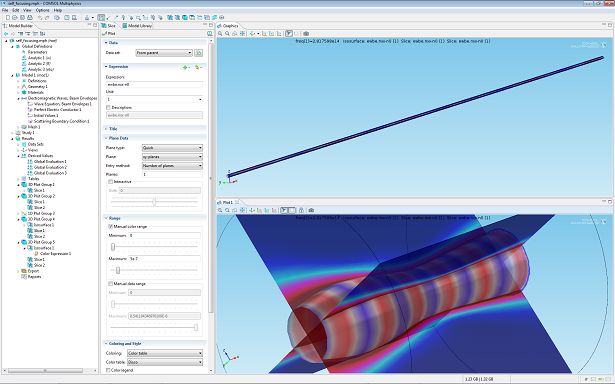
Taking Care of Fast Oscillations with the Wave Optics Module
The new COMSOL Multiphysics Wave Optics Module provides engineers with a great set of features for designing their simulations. One of the new capabilities included in this module is the groundbreaking beam envelope method for electromagnetic full-wave propagation. We hope this feature will become instrumental to the optics community.

Creating 2D Models from 3D Geometries in COMSOL Multiphysics
Our newest release, COMSOL Multiphysics version 4.3b, contains so many new modules and features, certain additions might get lost in the fray. One addition to the COMSOL Multiphysics base package we don’t want you to miss is the ability to create 2D models from cross sections of 3D geometries. This easy-to-use feature allows engineers to simplify the model, gain understanding of and fine-tune parameters, and dramatically reduce simulation time.

This Just In: COMSOL Multiphysics 4.3b
We’ve been dropping hints for the past few weeks here on the blog, and the time has finally come when we can officially unveil the release of COMSOL Multiphysics 4.3b. Five new products extend our product suite, and there are plenty of new features to enhance your simulation experience. The latest version of COMSOL Multiphysics is here, and you do not want to miss out on the news.

The Graphene Revolution: Part 4
Graphene can be created by way of thermal decomposition at high vacuum. In order to design and optimize these high-vacuum systems engineers might look to simulation, but there are currently not many modeling tools that are up to the task. Let’s have a look at how vacuum systems are relevant to graphene production, why you should simulate them, and how.

The Greenhouse Effect
Given the title of this blog post you might expect it to be about global warming, and I won’t blame you for it; greenhouse effect has become another popular term used when debating climate change. However, its original and literal meaning refers to a very different process, in particular when it comes to heat retention. Here we will describe the effect of heating up an actual greenhouse and suggest steps for optimizing its design.
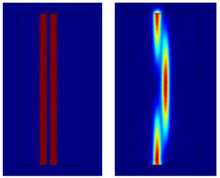
Wave Optics, to Approximate or Not?
Engineers working with lasers, optical fibers and waveguides, nonlinear optical processes, metamaterials, and other large photonic devices ultimately deal with wave optics. Photonic devices are considered “large” when they are larger than a wavelength of light. In that case, you deal with optics frequencies as opposed to radio frequencies, and the device is not complex enough to justify approximating with rays.

IEEE Spectrum Puts the Spotlight on Multiphysics
The Institute of Electrical and Electronics Engineers (IEEE) is doing some really cool things for its members. Chances are that you have attended their top rated conferences, downloaded papers from IEEE Xplore, or participated in one of many local chapter events. For electrical engineers like me, IEEE certainly is a rock to lean on for continued education and to connect with colleagues from around the world. Even if you are not a member you can tap into IEEE resources such […]

On Solvers: Benefits and Limits of Solution Methods
This week we have the honor of having Professor Wolfgang Joppich as a guest blogger. As you may know, COMSOL Multiphysics provides great default solvers for all applications. For the interested user, it is good to know that you can optionally tune or completely change the solver settings. We strongly recommend that you read this blog posting to get an experts’ perspective on the solver technologies offered by COMSOL. I am an avid reader of the COMSOL Blog and an […]
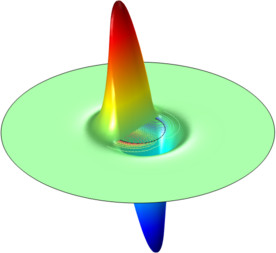
Step-Index Fiber Simulation
Optical fibers are used to transmit information in the form of light through an optical waveguide made of glass fibers. The light is sent in a series of pulses that can be translated as binary code, allowing the transfer of information through the fiber. Because such pulses can travel with less attenuation and are immune to electromagnetic disturbances, fibers are used instead of traditional metallic wires thus allowing data transmission over longer distances and at higher bandwidths.
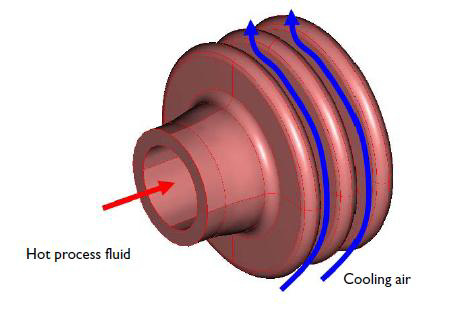
Cooling Flange Performance Analysis
Chemical reaction fluids can be cooled using glass flanges. The reaction fluid is passed through the flange and the air surrounding the flange then serves as the coolant. Engineers looking to optimize the cooling performance of such flanges can look to simulation for help.
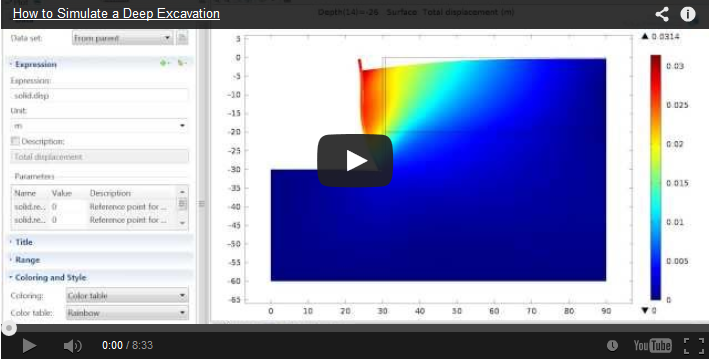
Digging into COMSOL’s Geomechanics Module
I will always remember a Geotechnical Engineering class I took during the pursuit of my Civil Engineering degree. It contained both the high and low points for that academic semester; the lab portion was a lot of fun, learning about (read: playing with) the different soils and clays existing in the state of Georgia. The final project, on the other hand, tasked us with designing a retaining wall to match certain specifications — a tough and lengthy assignment. A retaining […]
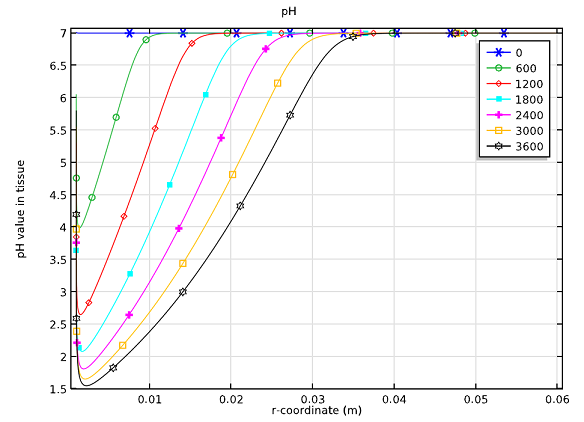
Why Model Electrochemical Applications?
It’s always been hard to place the field of electrochemistry into a more traditional engineering field. Departments and institutions that focus on electrochemical applications can be found within the faculties of Chemical Engineering, Physics, Materials Science, Physical Chemistry, and even Civil Engineering and Electrical Engineering. I believe this is because electrochemistry is heavily involved in applications that are quite varied — and in some ways quite new. Electrochemical applications need to be studied before they can be understood and optimized, […]
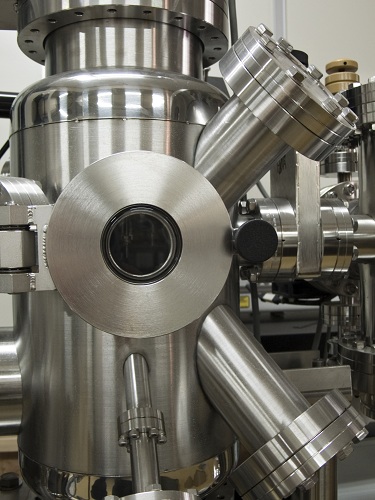
What Is Molecular Flow?
Vacuum is naturally associated with the hostile environment of deep space. To achieve such an environment in an artificial setting here on Earth is a very challenging task, and it turns out one cannot even come close to the low pressures of an interstellar vacuum. It is at these low pressures that molecular flow occurs.
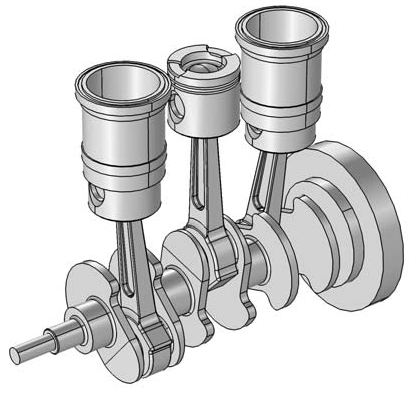
Multibody Dynamics
The dynamic analysis of interconnected bodies or links is called a multibody analysis. These bodies are connected by joints that constrain their relative motion. The simplest element of a multibody system is a single particle, which can be considered using Newton’s laws of motion. Multibody Dynamics has a long and storied background.
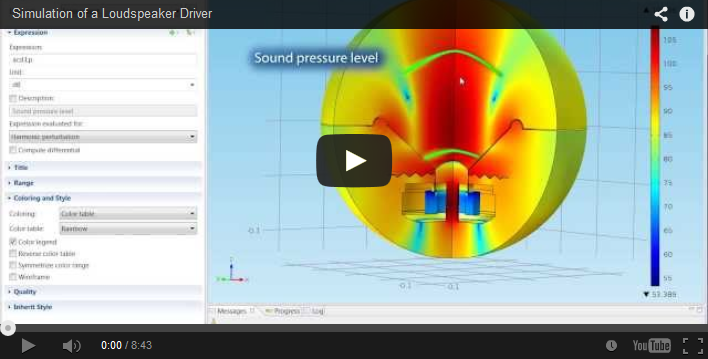
Calling All Audiophiles: Loudspeaker Analysis Video
When given the choice, we’d all prefer our loudspeakers to project perfect sound; having a phone conversation with someone who sounds like a robot caught in a windstorm is less than ideal. The quality of the sound is, naturally, dependent on how well the speaker is designed, and COMSOL Multiphysics is the perfect tool to simulate and optimize loudspeaker designs because of its easy-to-use multiphysics nature. For a loudspeaker analysis to be accurate, you must be able to simulate from […]

Non-Newtonian Fluids: The Pouring Ketchup Quandary
If you enjoy ketchup with your food, there’s a good chance you’ve experienced what we’ll call here the all-or-nothing ketchup quandary. You know, that moment when you reach for a new glass bottle of ketchup, remove the cap, and turn the bottle practically upside down — and then nothing happens. Intuitively, you shake or tap the bottle, and then suddenly your food is completely coated in ketchup (unless your reflexes are really good, of course). In this blog post, we […]

The Graphene Revolution: Part 3
Everyone’s talking about graphene right now. When was the last time a material received this much attention? Sure, other materials have peaked our interest before, but when something breaks into more mainstream news you know it’s going to be a very big deal.
